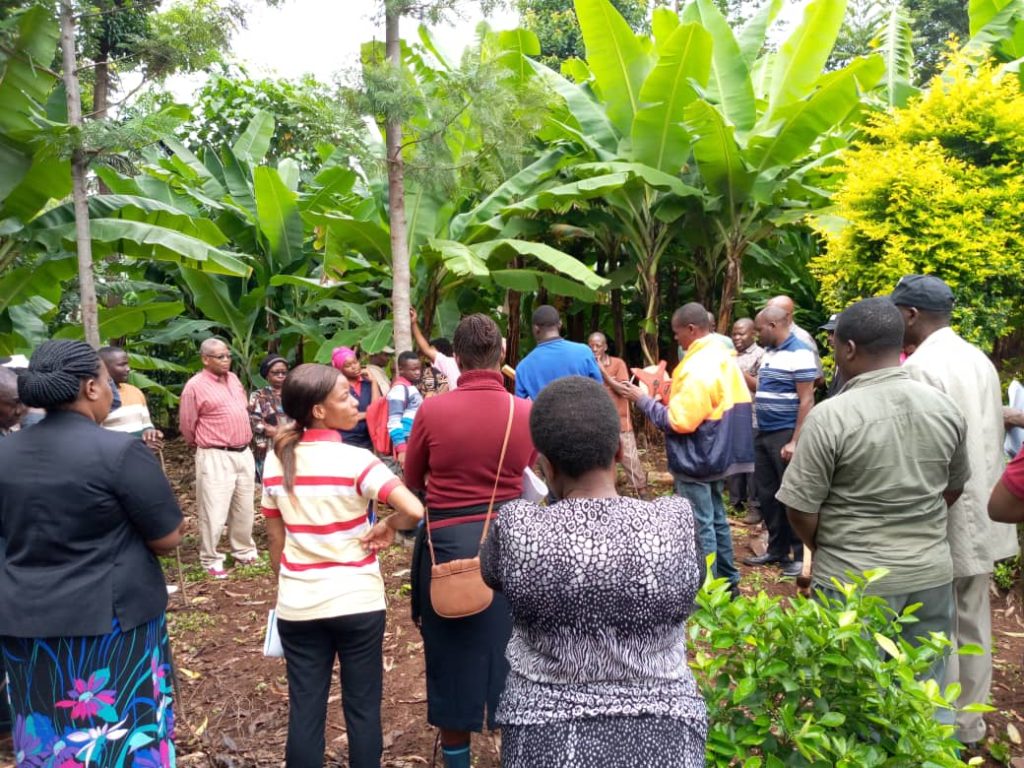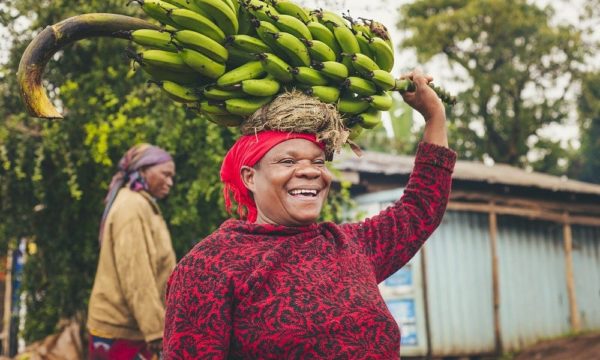
In Tanzania, where demand for bananas is high, banana farmers face the challenge of low productivity caused by pests and diseases and limited basic knowledge on banana management practices. The Bill & Melinda Gates Foundation funded ‘Improving banana agronomy practices for small scale farmers in highland banana cropping systems East Africa’ project set a goal to raise banana productivity in Tanzania from 10mt/ha/yr to 25 mt/ha/year. The banana agronomy project which is led by National Agricultural Research Organisation (NARO) is implemented in partnership with Tanzania Agricultural Research Institute (TARI), Bioversity International, International Institute of Tropical Agriculture (IITA) and CABI is also operated in Uganda.
As part of this project, the CABI project team with support from the Africa Soil Health Consortium (ASHC) planned and executed dissemination campaigns, and provided hands-on training for developing communication materials including pretesting materials with farmers. For Tanzania, a banana calendar – to guide farmers through activities for each month of the year, an extension guide and banana poster were developed. In order to increase the reach and value of the communication materials, scaling agents were given copies of the materials and have been trained in their use to train farmers.

Hajjat Rehema Hussein is a farmer in Tanzania’s Kagera region where banana is a staple food crop for about 1.2 million people. She has been cultivating banana for over 30 years using traditional methods and like many smallholder banana farmers in Tanzania has experienced loss of yield and income caused by weevils, bacterial wilt disease, declining soil fertility, falling of banana during strong winds (toppling), and drought.
Hajjat Rehema’s household was one of 2,147 households (891 in Rombo, Kilimanjaro and 1256 in Izimbya, Bukoba district in Kagera region) reached through training on proper banana management practices. She started to use the improved agronomic technologies in early 2019 after visiting a demonstration plot hosted by an extensionist from the project.

“After I started to use improved technologies, my plantation started to change drastically and the production shifted from 20 – 30 bunches per month per acre to 70 – 90 bunches per month per acre”, said Hajjat Rehema. Her farm has flourished immensely, and though the market price for bananas is as low as Tsh 3000 (£0.98) per bunch, the total income generated is more than enough for her daily upkeep due to her ability to sell more bunches. Hajjat Rehema has used her profits to acquire more land; going from one acre to two acres as well as establishing a vegetables plot where she has planted cabbage.
At the project review meeting in June 2020, project team reported that farms in Rombo were at 82% of the project’s productivity goal of 25 mt/ha/year and in Izimbya, productivity had reached 87%.
Related News
‘Tuning in’ to help banana farmers reap the ‘fruits’ of more profitable harvests
CABI joins partnership to help boost banana productivity in Uganda and Tanzania
Triple attack on bananas could devastate $35bn global industry
Related News & Blogs
Workshop explores Horizon Scanning options to identify and prioritize pests of threat to EAC Partner States
CABI has joined forces with the East African Community (EAC) Secretariat to hold a horizon scanning workshop in Tanzania to train Partner States on the identification and mitigation of priority crop pests which threaten livelihoods and food security. S…
16 September 2024




